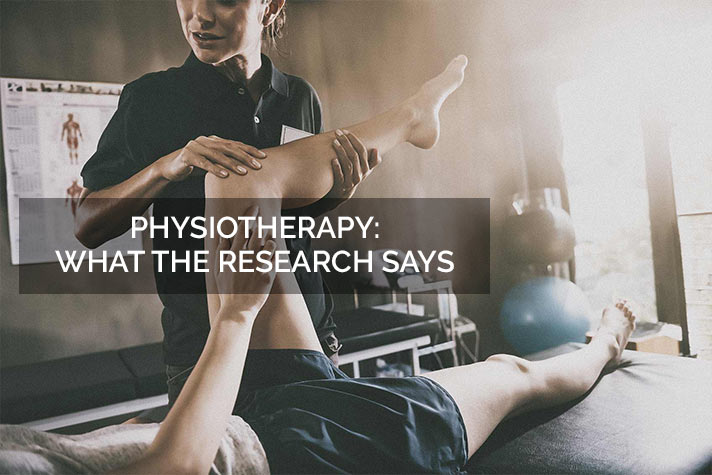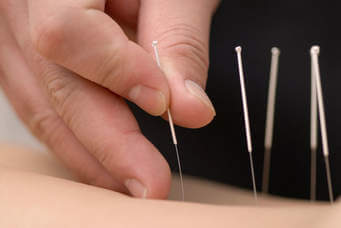 There are many factors that go into finding a highly skilled practitioner who consistently achieves their clients’ “good outcomes”
There are many factors that go into finding a highly skilled practitioner who consistently achieves their clients’ “good outcomes”
- Commitment to their own health and wellness
- Professional qualifications (Chiropractor, Physiotherapist, Osteopath)
- Advanced Diplomas or qualifications
- Commitment to the profession – a greater number of years in the profession often leads to stronger competency and stronger outcomes
- Consistent upskilling within their profession on a yearly basis
- Following best practice principles as evidenced from the scientific literature
Presented below is a review of some of the more significant scientific research findings in support of the physiotherapy profession. The evidence is very strong and demonstrates clearly that physiotherapy care is not only evidence-based but that the research itself supports the clinical application of physiotherapy techniques and services. Considering the checklist above, recognise that evidence-based practice is only one factor that should be considered when searching for a highly skilled Physiotherapist. However, this is an excellent starting point for solving the pain and dysfunction associated with;
- Migraines
- Headaches
- Total knee replacements
- Chronic lower back pain
- Chronic neck pain
- Postural Correction
- Impingement Syndrome
- Tennis elbow (Lateral epicondylalgia)
- Shoulder pain
- Rotator cuff tears
- Headaches and migraines
- Achilles tendonitis
- Knee pain
- And more…
The Physiotherapy Profession (Evidence-based practice)
A 2002 study in the Australian Journal of Physiotherapy aimed to describe the quantity and quality of randomised controlled trials and the number of systematic reviews relevant to physiotherapy. The authors concluded that there is a substantial body of evidence to support the benefits of physiotherapy.
Chronic Low Back Pain
 A 2015 study in the British Medical Journal, “Multidisciplinary biopsychosocial rehabilitation for chronic low back pain: Cochrane systematic review and meta-analysis”, demonstrated that a multidisciplinary approach (including physiotherapy) was more effective than standard approaches to overcoming chronic low back pain. Effortless Superhuman is a multidisciplinary practice and echoes the findings of this research. A 1997 systematic review of randomised controlled trials of the most common interventions for acute and chronic nonspecific low back pain concluded that there was moderate evidence in support of manipulation and substantial evidence in support of exercise therapy.
A 2015 study in the British Medical Journal, “Multidisciplinary biopsychosocial rehabilitation for chronic low back pain: Cochrane systematic review and meta-analysis”, demonstrated that a multidisciplinary approach (including physiotherapy) was more effective than standard approaches to overcoming chronic low back pain. Effortless Superhuman is a multidisciplinary practice and echoes the findings of this research. A 1997 systematic review of randomised controlled trials of the most common interventions for acute and chronic nonspecific low back pain concluded that there was moderate evidence in support of manipulation and substantial evidence in support of exercise therapy.
Headaches / Migraines
 A 2017 article in The Spine Journal looked at the effectiveness of physiotherapy treatment for seniors with recurrent headaches associated with neck pain and dysfunction. The research looked at headache frequency, headache intensity and duration, neck pain and disability, cervical range of motion, quality of life, participant satisfaction and medication intake. The participants in the research reported significant reductions in headache frequency immediately following treatment, at 6-month follow-up, and at 9-month follow-up. There were also improvements in headache intensity and duration, neck pain and disability, neck movement and general health. Participants also reported needing less medication. A 2015 study looked at the efficacy of interventions used by physiotherapists for patients with a headache and migraines. The researchers concluded that there is evidence to support physiotherapy care and that statistically significant reductions in the intensity, frequency and duration of a migraine, tension-type headaches and cervicogenic headaches are supported by the literature. Research conducted in 2015 provided an updated discussion on what is supported by current scientific evidence for the use of physical therapies for a tension-type headache (TTH), migraine, and cervicogenic headache (CeH).
A 2017 article in The Spine Journal looked at the effectiveness of physiotherapy treatment for seniors with recurrent headaches associated with neck pain and dysfunction. The research looked at headache frequency, headache intensity and duration, neck pain and disability, cervical range of motion, quality of life, participant satisfaction and medication intake. The participants in the research reported significant reductions in headache frequency immediately following treatment, at 6-month follow-up, and at 9-month follow-up. There were also improvements in headache intensity and duration, neck pain and disability, neck movement and general health. Participants also reported needing less medication. A 2015 study looked at the efficacy of interventions used by physiotherapists for patients with a headache and migraines. The researchers concluded that there is evidence to support physiotherapy care and that statistically significant reductions in the intensity, frequency and duration of a migraine, tension-type headaches and cervicogenic headaches are supported by the literature. Research conducted in 2015 provided an updated discussion on what is supported by current scientific evidence for the use of physical therapies for a tension-type headache (TTH), migraine, and cervicogenic headache (CeH).
- Spinal joint manipulation
- Spinal joint mobilisation
- Soft tissue interventions
- Therapeutic exercises
- Dry needling and acupuncture
The authors concluded that the current evidence demonstrated that the effectiveness of these interventions would depend on proper clinical reasoning since not all interventions are equally effective for all headache pain conditions. For example, evidence of physical therapy in a migraine is more controversial than in a tension-type headache, since these conditions often have significantly different causative factors. In other words, it’s not a ‘once size fits all’ approach to treating migraines and headaches. Treating practitioners are required to use advanced assessment skills and strong clinical reasoning skills to accurately diagnosis the patients’ presenting complaint. This is a powerful statement by the authors because it once again demonstrates that many factors should be considered when selecting your health care provider. The opening paragraphs of this article discussed the relevant factors that need to be considered; one of which was a number of years of clinical experience, which often leads to stronger clinical reasoning skills. The authors went on to state, “it seems that multimodal approaches including different interventions are more effective for patients with a tension-type headache, migraine and cervicogenic headache.” Effortless Superhuman is a multi-disciplinary practice and as such can offer its clients a wide range of therapies to assist in overcoming the debilitating symptoms associated with a migraine and headaches. Likewise, Effortless Superhuman ‘Pain and Dysfunction’ practitioners have a broad range of clinical skills that can be used effectively for the management of headaches and migraines. These include:
| Acupuncture | Dry Needling | Soft tissue therapies |
| Joint mobilization | Joint manipulation | Spinal traction |
| Natural supplementation | Aromatherapy |
Effortless Superhuman (ES) practitioners have strong clinical reasoning skills which ensure the most appropriate application of these therapies and enhances patient outcomes.
All Musculoskeletal Conditions
 A 2014 study called “Cost-Effectiveness of Manual Therapy for the Management of Musculoskeletal Conditions: A Systematic Review and Narrative Synthesis of Evidence from Randomized Controlled Trials” revealed that all forms of manual therapy for neck, back, shoulder, and ankle pain were more effective than general medical care alone. Manual therapy techniques such as osteopathic spinal manipulation, physiotherapy manipulation and mobilisation techniques, and chiropractic manipulation with or without other treatments, were more cost-effective than usual general practitioner (GP) care alone. It’s also interesting to note that spinal adjustments were found to be less costly and more effective than alternative treatment such as GP care in improving neck pain.
A 2014 study called “Cost-Effectiveness of Manual Therapy for the Management of Musculoskeletal Conditions: A Systematic Review and Narrative Synthesis of Evidence from Randomized Controlled Trials” revealed that all forms of manual therapy for neck, back, shoulder, and ankle pain were more effective than general medical care alone. Manual therapy techniques such as osteopathic spinal manipulation, physiotherapy manipulation and mobilisation techniques, and chiropractic manipulation with or without other treatments, were more cost-effective than usual general practitioner (GP) care alone. It’s also interesting to note that spinal adjustments were found to be less costly and more effective than alternative treatment such as GP care in improving neck pain.
Knee Pain
 A 2016 study aimed to determine whether improvements after a one-month patellofemoral pain (PFP) program addressing both local and global deficits were maintained for three years. The authors concluded that in compliant patients, the significant improvements after physiotherapy were maintained for three years. A 2015 study entitled “Effectiveness of physiotherapy exercise following total knee replacement: systematic review and meta-analysis,” clearly demonstrated how effective physiotherapy management can be post-surgery. Research conducted in 2000 by Clark et al. entitled “Physiotherapy for anterior knee pain: a randomised controlled trial demonstrated that the proprioceptive muscle stretching and strengthening aspects of physiotherapy have significantly beneficial effects for people with anterior knee pain and that these benefits were still present at one-year follow-up. There are many other studies supporting physiotherapy treatment in relation to knee pain.
A 2016 study aimed to determine whether improvements after a one-month patellofemoral pain (PFP) program addressing both local and global deficits were maintained for three years. The authors concluded that in compliant patients, the significant improvements after physiotherapy were maintained for three years. A 2015 study entitled “Effectiveness of physiotherapy exercise following total knee replacement: systematic review and meta-analysis,” clearly demonstrated how effective physiotherapy management can be post-surgery. Research conducted in 2000 by Clark et al. entitled “Physiotherapy for anterior knee pain: a randomised controlled trial demonstrated that the proprioceptive muscle stretching and strengthening aspects of physiotherapy have significantly beneficial effects for people with anterior knee pain and that these benefits were still present at one-year follow-up. There are many other studies supporting physiotherapy treatment in relation to knee pain.
Neck Pain
 A 2009 study in the Journal of Manipulative and Physiological Therapeutics aimed to identify, critically appraise, and synthesise literature from 1980 to 2006 on non-invasive interventions for neck pain. The researchers concluded that therapies involving manual therapy and exercise are more effective than alternative strategies for patients with neck pain and that this was also true for therapies which included educational interventions. A 2003 study in the British Medical Journal entitled “Cost effectiveness of physiotherapy, manual therapy and general practitioner care for neck pain: economic evaluation alongside a randomised controlled trial” demonstrated that Manual therapy (spinal mobilisation) is more effective and less costly for treating neck pain than physiotherapy or care by a general practitioner. It should be noted that all of Effortless Superhuman’s ‘Pain and Dysfunction’ practitioners, utilise spinal mobilisation (when appropriate) for treating neck pain. A 2015 study performed by the Cochrane Collaboration evaluated manipulation and mobilisation as a single treatment option for neck pain. The authors concluded that there was evidence to support the use of thoracic (middle back) manipulation for neck pain, function and quality of life. The authors also found that the evidence suggests that manipulation and mobilisation produce similar results. Why is it so important to see your Physiotherapist to alleviate neck pain? Why is a postural correction (reducing forward head posture) so important?
A 2009 study in the Journal of Manipulative and Physiological Therapeutics aimed to identify, critically appraise, and synthesise literature from 1980 to 2006 on non-invasive interventions for neck pain. The researchers concluded that therapies involving manual therapy and exercise are more effective than alternative strategies for patients with neck pain and that this was also true for therapies which included educational interventions. A 2003 study in the British Medical Journal entitled “Cost effectiveness of physiotherapy, manual therapy and general practitioner care for neck pain: economic evaluation alongside a randomised controlled trial” demonstrated that Manual therapy (spinal mobilisation) is more effective and less costly for treating neck pain than physiotherapy or care by a general practitioner. It should be noted that all of Effortless Superhuman’s ‘Pain and Dysfunction’ practitioners, utilise spinal mobilisation (when appropriate) for treating neck pain. A 2015 study performed by the Cochrane Collaboration evaluated manipulation and mobilisation as a single treatment option for neck pain. The authors concluded that there was evidence to support the use of thoracic (middle back) manipulation for neck pain, function and quality of life. The authors also found that the evidence suggests that manipulation and mobilisation produce similar results. Why is it so important to see your Physiotherapist to alleviate neck pain? Why is a postural correction (reducing forward head posture) so important?  According to the results of a 2009 study, chronic neck pain patients presented with statistically significant decreased lung capacity and reduced respiratory muscle strength. Forward head posture (FHP) and increased thoracic kyphosis (rounding) have been positively correlated with neck pain in numerous research papers. This research suggests that FHP and rounding of the spine may impede on the proper respiratory function as well. And what are the potential risks of ineffective breathing patterns?
According to the results of a 2009 study, chronic neck pain patients presented with statistically significant decreased lung capacity and reduced respiratory muscle strength. Forward head posture (FHP) and increased thoracic kyphosis (rounding) have been positively correlated with neck pain in numerous research papers. This research suggests that FHP and rounding of the spine may impede on the proper respiratory function as well. And what are the potential risks of ineffective breathing patterns?
- An increased rate and decreased depth of respirations are associated with fear and anxiety.
- Inefficient breathing could result in muscular imbalance, motor control alternations, and physiological adaptations that are capable of modifying movement.
- Respiratory patterns may be linked to an individuals’ emotional state and their ability to cope.
The opposite is true as well; treatments, exercises, and activities that improve posture and restore proper breathing mechanics can lead to significant improvements in health. This article on Tai Chi Chuan (TCC) demonstrated that TCC can have a beneficial effect on cardiorespiratory function, immune capacity, mental control, flexibility, and balance control. It also improves muscle strength and reduces the risk of falls in the elderly.
Tennis Elbow
 A 2006 study was a randomised trial exploring corticosteroid injection, or wait and see for tennis elbow. It demonstrated that physiotherapy treatment that combined elbow manipulation and exercise has a superior benefit to wait and see in the first six weeks and to corticosteroid injections after six weeks, providing a reasonable alternative to injections in the mid to long term. It’s interesting to note that the significant short-term benefits of corticosteroid injection are paradoxically reversed after six weeks, with high recurrence rates, implying that this treatment should be used with caution in the management of tennis elbow. A 1996 study entitled “The initial effects of a cervical spine manipulative physiotherapy treatment on the pain and dysfunction of lateral epicondylalgia” demonstrated that cervical spinal manipulation had a significant benefit in alleviating the pain associated with tennis elbow. A second study in 2008 backed up these findings. A 2001 article entitled “Specific manipulative therapy treatment for chronic lateral epicondylalgia produces uniquely characteristic hypoalgesia” demonstrated that a precise elbow mobilisation technique resulted in statistically significant improvements in pain-free grip strength in patients suffering from tennis elbow. A 2003 article entitled “Lateral epicondylalgia: a musculoskeletal physiotherapy perspective” highlighted that precise exercise prescription in addition to manipulation and sports taping techniques provides substantial initial pain relief for the vast majority of clients.
A 2006 study was a randomised trial exploring corticosteroid injection, or wait and see for tennis elbow. It demonstrated that physiotherapy treatment that combined elbow manipulation and exercise has a superior benefit to wait and see in the first six weeks and to corticosteroid injections after six weeks, providing a reasonable alternative to injections in the mid to long term. It’s interesting to note that the significant short-term benefits of corticosteroid injection are paradoxically reversed after six weeks, with high recurrence rates, implying that this treatment should be used with caution in the management of tennis elbow. A 1996 study entitled “The initial effects of a cervical spine manipulative physiotherapy treatment on the pain and dysfunction of lateral epicondylalgia” demonstrated that cervical spinal manipulation had a significant benefit in alleviating the pain associated with tennis elbow. A second study in 2008 backed up these findings. A 2001 article entitled “Specific manipulative therapy treatment for chronic lateral epicondylalgia produces uniquely characteristic hypoalgesia” demonstrated that a precise elbow mobilisation technique resulted in statistically significant improvements in pain-free grip strength in patients suffering from tennis elbow. A 2003 article entitled “Lateral epicondylalgia: a musculoskeletal physiotherapy perspective” highlighted that precise exercise prescription in addition to manipulation and sports taping techniques provides substantial initial pain relief for the vast majority of clients.
Shoulder Pain and Injury
 Research conducted in 2016 aimed to identify which baseline patient and clinical characteristics are associated with a better outcome, 6 weeks and 6 months after starting a course of physiotherapy for shoulder pain. The authors concluded that psychological factors were consistently associated with patient-perceived results and that psychosocial and medical information should be considered by anyone referring to physiotherapy services or by treating practitioners. At Effortless Superhuman, the practitioner “Intake Forms” are very extensive and cover a broad range of information including family medical history, patient medical history, lifestyle factors and psychosocial factors. We believe that this is a critical factor in determining how well a client will respond to any form of therapy provided and recognise that these factors will affect clinical outcomes. Effortless Superhuman (ES) is a multi-disciplinary practice offering a wide range of services including acupuncture/dry needling, physiotherapy, neuro dynamic testing (NDT), corrective exercise, advanced nutritional consulting, supplementation, holistic lifestyle coaching, and functional risk profiles. A 2011 study by Brantingham et al. demonstrated that there is evidence to support manual and manipulative therapy for common shoulder pain and disorders. The outcome measures were enhanced when this form of therapy was used in conjunction with additional forms of therapy and improvements in lifestyle factors. A systematic review of the literature in 2012 by Maund et al. revealed that there was limited clinical evidence on the effectiveness of treatments for primary frozen shoulder. Evidence such as this guides the ES Practitioners and helps shape their treatment protocols. In the vast majority of clients presenting with primary frozen shoulders (females, age 40 to 55), there are almost always compounding health challenges that may be driving the shoulder capsulitis or preventing it from healing. As such, following the protocol set by the ES Performance Pyramid, the client’s health issues will be addressed before any form of manual therapy or exercise therapy is considered. Our clinical findings to date would suggest that this approach is far more successful for the client in the long run than manual therapy alone.
Research conducted in 2016 aimed to identify which baseline patient and clinical characteristics are associated with a better outcome, 6 weeks and 6 months after starting a course of physiotherapy for shoulder pain. The authors concluded that psychological factors were consistently associated with patient-perceived results and that psychosocial and medical information should be considered by anyone referring to physiotherapy services or by treating practitioners. At Effortless Superhuman, the practitioner “Intake Forms” are very extensive and cover a broad range of information including family medical history, patient medical history, lifestyle factors and psychosocial factors. We believe that this is a critical factor in determining how well a client will respond to any form of therapy provided and recognise that these factors will affect clinical outcomes. Effortless Superhuman (ES) is a multi-disciplinary practice offering a wide range of services including acupuncture/dry needling, physiotherapy, neuro dynamic testing (NDT), corrective exercise, advanced nutritional consulting, supplementation, holistic lifestyle coaching, and functional risk profiles. A 2011 study by Brantingham et al. demonstrated that there is evidence to support manual and manipulative therapy for common shoulder pain and disorders. The outcome measures were enhanced when this form of therapy was used in conjunction with additional forms of therapy and improvements in lifestyle factors. A systematic review of the literature in 2012 by Maund et al. revealed that there was limited clinical evidence on the effectiveness of treatments for primary frozen shoulder. Evidence such as this guides the ES Practitioners and helps shape their treatment protocols. In the vast majority of clients presenting with primary frozen shoulders (females, age 40 to 55), there are almost always compounding health challenges that may be driving the shoulder capsulitis or preventing it from healing. As such, following the protocol set by the ES Performance Pyramid, the client’s health issues will be addressed before any form of manual therapy or exercise therapy is considered. Our clinical findings to date would suggest that this approach is far more successful for the client in the long run than manual therapy alone.
Mobilization Techniques
A 2002 study by Hurwitz et al. compared the effectiveness of Chiropractic manipulation and physiotherapy mobilisation in the treatment of neck pain. The information demonstrated that both manipulation and mobilisation were equally effective in resolving neck pain and the associated disabilities.
Postural Correction
Research conducted in 2014 looked at the relationship of forward head posture (FHP) and rounded shoulders with neck pain. The information demonstrated that both FHP and thoracic kyphosis were significant predictors of neck pain. This is one of many studies that demonstrate that changes in posture can lead to resolution of neck pain, headaches and other debilitating symptoms.
Dry Needling
 All of the ‘Pain and Dysfunction’ practitioners at Effortless Superhuman specialise in dry needling and acupuncture. Decades of excellent clinical outcomes are now supported by the scientific literature in demonstrating the effectiveness of this form of treatment. A 2006 study entitled “Trigger points in the suboccipital muscles and forward head posture in a tension-type headache” revealed that suboccipital active trigger points and forward head posture were associated with chronic tension-type headache (CTTH). This may be one reason why Effortless Superhuman’s ‘Pain and Dysfunction’ practitioners are so effective at alleviating the symptoms associated with CTTH with acupuncture and dry needling.
All of the ‘Pain and Dysfunction’ practitioners at Effortless Superhuman specialise in dry needling and acupuncture. Decades of excellent clinical outcomes are now supported by the scientific literature in demonstrating the effectiveness of this form of treatment. A 2006 study entitled “Trigger points in the suboccipital muscles and forward head posture in a tension-type headache” revealed that suboccipital active trigger points and forward head posture were associated with chronic tension-type headache (CTTH). This may be one reason why Effortless Superhuman’s ‘Pain and Dysfunction’ practitioners are so effective at alleviating the symptoms associated with CTTH with acupuncture and dry needling.
Conclusion
The evidence presented in this document represents only a small portion of the research supporting the Physiotherapy profession. With that said, it further strengthens the role of Physiotherapists play in the community and their ability to alleviate pain, restore balance to the body, and improve the quality of life of their clients. Results may vary.
